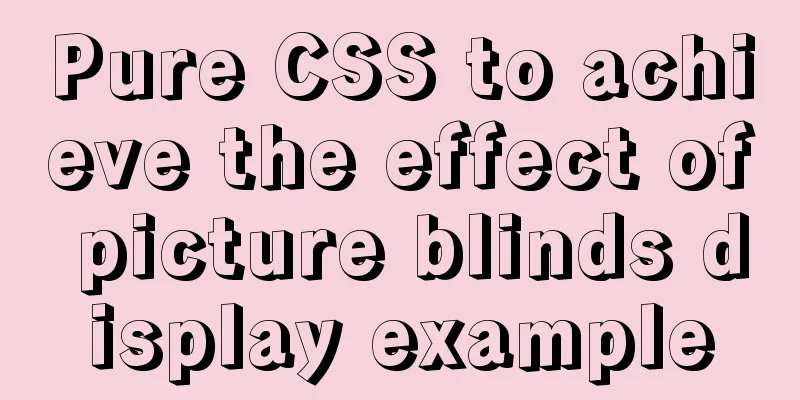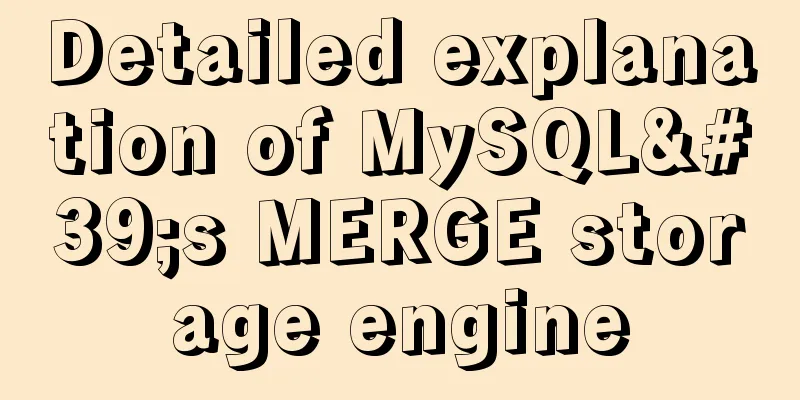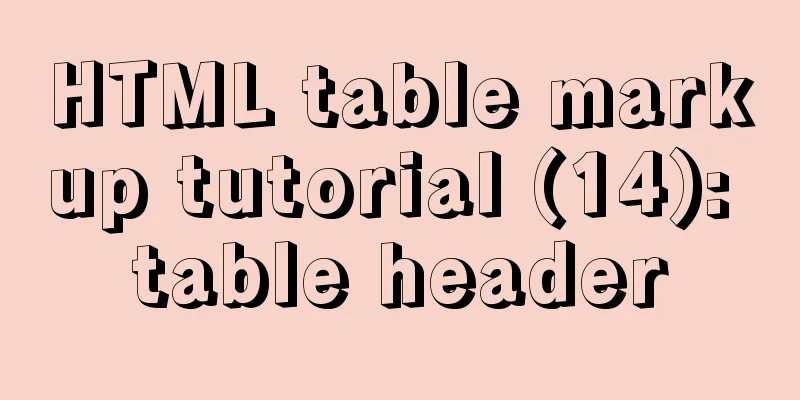Pure CSS to achieve the effect of picture blinds display example

|
First, let me show you the finished effect
Main idea: In fact, this blinds still uses a kind of sleight of hand. It seems that the picture expands after we move the mouse over it. In fact, these pictures do not move at all. We just put these pictures in a list, superimpose them on each other, and change the width of the list when the mouse moves. Step One: Build a Shutter Frame HTML code:
<div class="container">
<ul>
<li></li>
<li></li>
<li></li>
<li></li>
<li></li>
</ul>
</div>CSS code:
*{
margin: 0;
padding: 0;
}
.container{
margin: 100px auto;
border: 2px solid #568bc7;
width: 800px;
height: 300px;
}
.container ul{
display: flex;
}
.container li{
width: 160px;
height: 300px;
list-style: none;
border-left: 1px solid #194b8d;
}
.container li img{
display: block;
width: 800px;
height: 300px;
}
Note: The width of the li here may need to be calculated manually. Although the elastic box can be used to achieve automatic equal division, I found a bug after adding hover. You can try it. The elastic box is not used here. Now the following framework is obtained:
Step 2: Insert the picture and use hover to create special effects I inserted five paintings here Here we can find that the image exceeds the scope of our container
At this point we add an overflow hidden
Such a blind is of scale. How to make the picture move like the demonstration GIF?
.container ul:hover li{
width: 40px;
}
.container ul li:hover{
width: 600px;
}
This demo is actually an exercise in the flexible use of the :hover attribute. Step 3: Details After completing the above, we can see that the whole process is very stiff. Here we can add transition attributes to make the change smoother. At the same time, add a little shadow effect to the left border of each li to make it look more three-dimensional. box-shadow: 0 0 25px #000; transition: all 0.5s; Finally it's done
Here is the full code:
<!DOCTYPE html>
<html lang="en">
<head>
<meta charset="UTF-8">
<meta name="viewport" content="width=device-width, initial-scale=1.0">
<title>Document</title>
<style>
*{
margin: 0;
padding: 0;
}
.container{
margin: 100px auto;
border: 2px solid #568bc7;
width: 800px;
height: 300px;
overflow: hidden;
}
.container ul{
display: flex;
}
.container li{
width: 160px;
height: 300px;
list-style: none;
border-left: 1px solid #194b8d;
box-shadow: 0 0 25px #000;
transition: all 0.5s;
}
.container li img{
display: block;
width: 800px;
height: 300px;
}
.container ul:hover li{
width: 40px;
}
.container ul li:hover{
width: 600px;
}
</style>
</head>
<body>
<div class="container">
<ul>
<li><img src="./img/tq1.jpg" alt=""></li>
<li><img src="./img/tq2.jpg" alt=""></li>
<li><img src="./img/tq3.jpg" alt=""></li>
<li><img src="./img/tq4.jpg" alt=""></li>
<li><img src="./img/tq5.jpg" alt=""></li>
</ul>
</div>
</body>
</html>This is the end of this article about how to achieve image blinds display effect with pure CSS. For more relevant CSS image blinds content, please search 123WORDPRESS.COM’s previous articles or continue to browse the following related articles. I hope you will support 123WORDPRESS.COM in the future! |
<<: What is the function of !-- -- in HTML page style?
>>: Detailed explanation of JavaScript BOM composition and common events
Recommend
Nodejs Exploration: In-depth understanding of the principle of single-threaded high concurrency
Table of contents Preface Architecture at a Glanc...
Best Practices for MySQL Upgrades
MySQL 5.7 adds many new features, such as: Online...
Examples of correct use of maps in WeChat mini programs
Table of contents Preface 1. Preparation 2. Actua...
This article teaches you how to play with CSS combination selectors
CSS combination selectors include various combina...
JavaScript implements click to change the image shape (transform application)
JavaScript clicks to change the shape of the pict...
64-bit CentOs7 source code installation mysql-5.6.35 process sharing
First install the dependent packages to avoid pro...
Solution to invalid Nginx cross-domain setting Access-Control-Allow-Origin
nginx version 1.11.3 Using the following configur...
WeChat applet wxs date and time processing implementation example
Table of contents 1. Timestamp to date 2. Convert...
Solve the problem that PhpStorm fails to connect to VirtualBox
Problem description: When phpstorm's SFTP hos...
MySQL data operation-use of DML statements
illustrate DML (Data Manipulation Language) refer...
How to implement simple data monitoring with JS
Table of contents Overview first step Step 2 Why ...
Detailed explanation on reasonable settings of MySQL sql_mode
Reasonable setting of MySQL sql_mode sql_mode is ...
How to call a piece of HTML code together on multiple HTML pages
Method 1: Use script method: Create a common head...
Method for realizing Internet interconnection by VMware virtual machine bridging
After installing VMware and creating a new virtua...
Analysis of common usage examples of MySQL process functions
This article uses examples to illustrate the comm...














